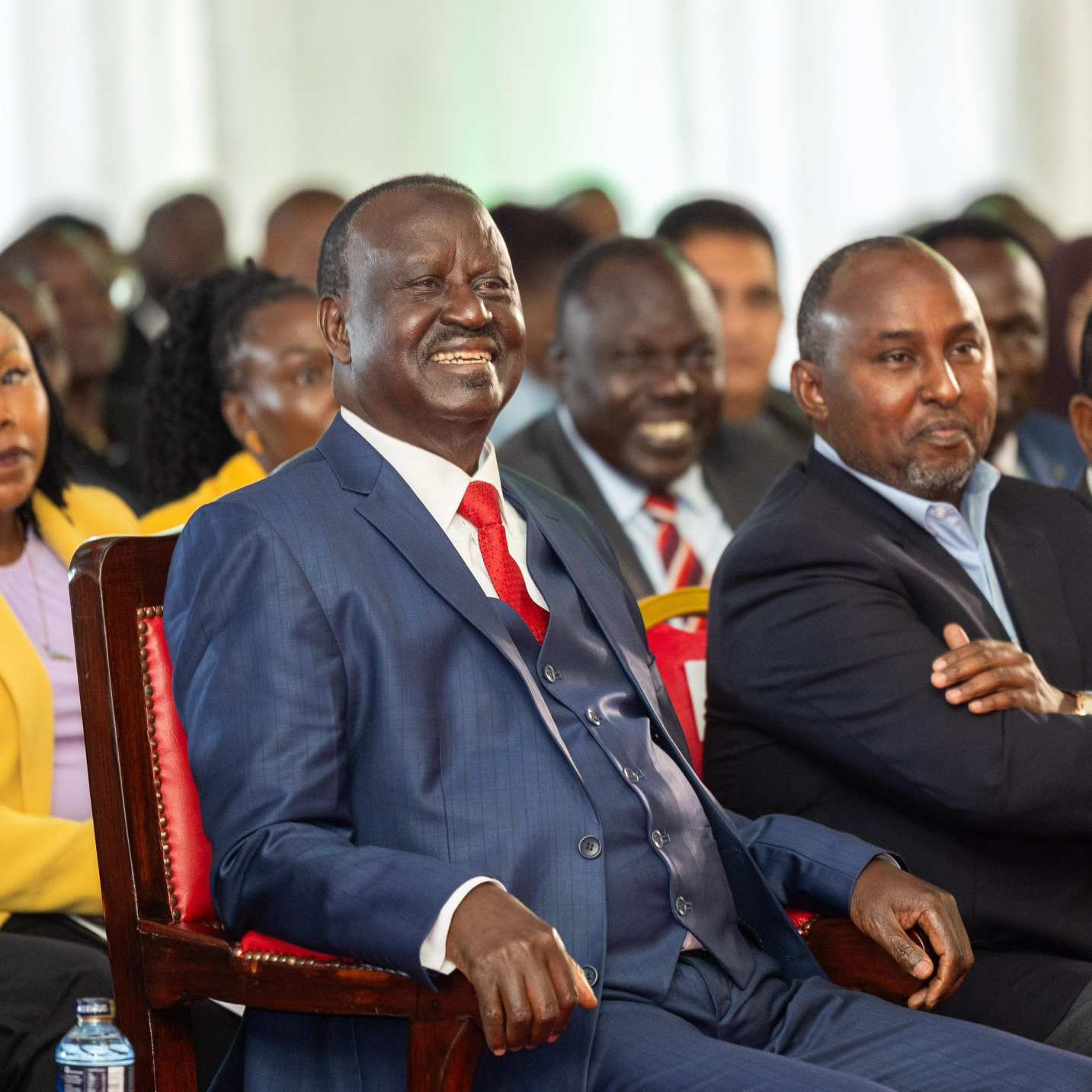Former Prime Minister Raila Amolo Odinga, one of Kenya’s most influential and enduring political figures, died on Wednesday, October 15, 2025, in India at the age of 80.
He reportedly suffered a cardiac arrest during a morning walk while undergoing treatment in the country.
His death marks the end of a momentous and often turbulent chapter in Kenya’s political history. Popularly known as “Baba” (Father) and “Agwambo” (The Enigma), Odinga was widely regarded as the most consequential Kenyan leader never to occupy the presidency, a position he sought unsuccessfully five times.
Born on January 7, 1945, in Maseno, Raila was the son of Jaramogi Oginga Odinga, Kenya’s first Vice President and a leading figure in the struggle for independence.
His upbringing immersed him early in politics and public life. After earning a Master’s degree in Mechanical Engineering from the Technical University of Magdeburg in East Germany in 1970, he returned to Kenya, lectured at the University of Nairobi, and later joined the Kenya Bureau of Standards as Deputy Director.
Odinga’s political activism gained momentum in the 1970s and 1980s, when he became a vocal critic of the single-party rule under President Daniel arap Moi.
Following the failed 1982 coup attempt, he was arrested and detained without trial for six years — the first of several incarcerations tied to his calls for political reform.
His detention and subsequent exile in Norway transformed him into a symbol of the “second liberation” — the struggle for multiparty democracy and greater political freedoms.
With the reintroduction of multiparty politics in 1991, Odinga emerged as one of the key opposition leaders. He was elected Member of Parliament for Lang’ata in 1992 and made his first presidential run in 1997 under the National Development Party (NDP), finishing third.
In 2001, Odinga merged his NDP with Moi’s ruling KANU party and was appointed Energy Minister, briefly aligning himself with the government.
However, after Moi endorsed Uhuru Kenyatta as his preferred successor in 2002, Odinga led a dramatic exodus from KANU, forming the Liberal Democratic Party (LDP). He later joined the National Rainbow Coalition (NARC), where he played a decisive role in the opposition alliance that defeated KANU after nearly four decades in power.
It was during this campaign that he famously declared “Kibaki Tosha” (Kibaki is the one), endorsing Mwai Kibaki for the presidency and setting aside his own ambition for the greater goal of change.
The NARC victory marked a historic democratic transition, but the alliance fractured soon after. Odinga accused Kibaki of reneging on a pre-election power-sharing deal, prompting him to lead the successful “No” campaign during the 2005 constitutional referendum.
The 2007 general election proved the most defining and controversial moment of Odinga’s career.
Running on the Orange Democratic Movement (ODM) ticket, he was narrowly and controversially declared the loser to President Kibaki, triggering widespread post-election violence that left over 1,000 people dead.
The crisis ended with a power-sharing agreement brokered by former UN Secretary-General Kofi Annan, creating the position of Prime Minister, which Odinga held from 2008 to 2013.
A central achievement of his tenure was his contribution to the 2010 Constitution, which introduced far-reaching reforms including devolution and an expanded Bill of Rights.
Odinga contested the presidency again in 2013 and 2017, both times losing to Uhuru Kenyatta. In 2018, he made peace with Kenyatta in a historic “Handshake,” reshaping Kenya’s political landscape.
His final presidential attempt in 2022, backed by Kenyatta, ended in defeat to William Ruto.
In his later years, Odinga took on a continental role as the African Union’s High Representative for Infrastructure Development and later sought the position of African Union Commission Chairperson, a race he lost in early 2025.
Raila Odinga leaves behind a towering legacy as a reformist, freedom fighter, and opposition leader whose resilience and vision profoundly influenced Kenya’s democratic evolution.
